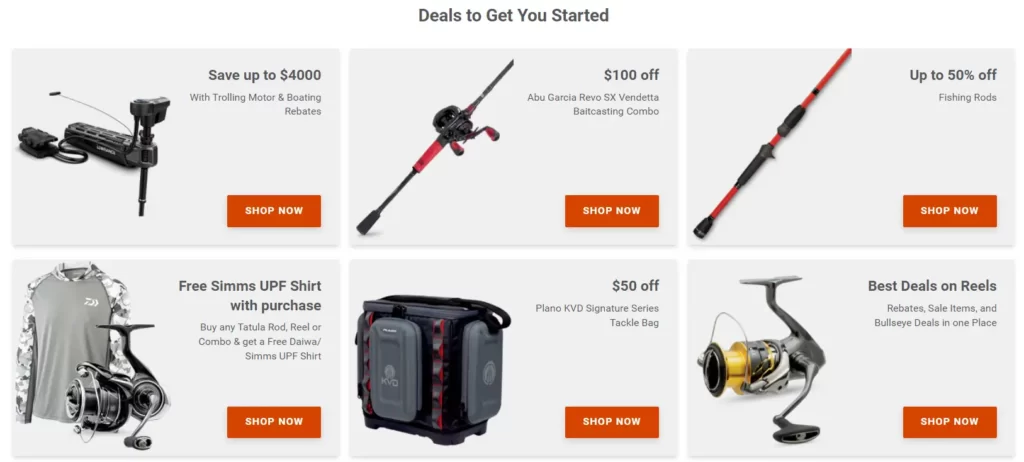Explore Canada's Ultimate Fishing, Hunting, and Wildlife Adventures

How should you pass a fishing boat?
Table of Contents
When boating on the water, it’s important to know the proper etiquette for passing a fishing boat. This ensures the safety of both you and the anglers on the fishing boat.
In this article, we will discuss the rules and guidelines for passing a fishing boat to maintain a safe and enjoyable boating experience.
Key Takeaways:
- Understanding boating etiquette is essential for safe boating practices.
- Giving other boats plenty of space on the water is a basic rule of navigation.
- Fishing boats may have ropes, fishing lines, and nets that can extend through the water, so it’s important to recognize the potential dangers.
- Prioritizing safety and courtesy by waiting for the all-clear signal from a fishing boat, maintaining a safe speed, and minimizing wakes when passing.
- Identifying a fishing boat’s characteristics and spotting common fishing gear and tackle can help you anticipate their presence in the water.
The Importance of Understanding Boating Etiquette
Understanding boating etiquette is crucial for safe and enjoyable boating. Whether you are a seasoned boater or a novice, knowing the proper rules and guidelines for passing a fishing boat is essential to ensure the safety of both you and the anglers on the fishing boat.
Disclosure: When you purchase a service or a product through our links, we sometimes earn a commission, at no extra cost to you.
The Basic Rules of Navigation
One of the basic rules of navigation is to give other boats plenty of space on the water. This rule applies to passing fishing boats as well. By maintaining a safe distance, you can avoid accidents and promote a respectful boating community.
Recognizing the Potential Dangers
Passing a fishing boat comes with potential dangers that need to be recognized. Fishing boats often have ropes, fishing lines, and nets that can extend hundreds of yards through the water. Crossing these lines improperly can result in accidents and damage to both boats. By understanding these potential dangers, you can take the necessary precautions when passing a fishing boat.
Prioritizing Safety and Courtesy on the Water
Prioritizing safety and courtesy on the water is crucial for boating etiquette. When passing a fishing boat, it’s important to wait for the all-clear signal from the fishing boat before proceeding. This communication ensures a safe passing maneuver. Additionally, maintaining a safe speed and minimizing wakes when passing a fishing boat shows courtesy and ensures the safety of everyone on the water.
Identifying a Fishing Boat on the Water
Fishing Boat Characteristics
When out on the water, it’s crucial to be able to identify a fishing boat to ensure proper passing procedures. Fishing boats have certain characteristics that set them apart from other types of boats. By familiarizing yourself with these distinguishing features, you can easily recognize a fishing boat and take the necessary precautions when passing.
Spotting Common Fishing Gear and Tackle
In addition to their unique characteristics, fishing boats often have specific gear and tackle associated with their fishing activities. By spotting common fishing gear and tackle, you can anticipate the presence of a fishing boat in the water and adjust your passing maneuvers accordingly. This knowledge is essential for maintaining a safe passing distance and minimizing the risk of entanglement.
Communicating With Other Boaters
Effective communication with other boaters is essential for safe boating practices. When passing a fishing boat, it’s important to establish clear communication to ensure a smooth and safe passing maneuver. Clear and concise communication helps to avoid misunderstandings and potential accidents on the water.
There are different ways to communicate with fishing boat operators when passing. One common method is the use of hand signals. By using predefined hand signals, boaters can convey their intentions and ensure mutual understanding. For example, a raised hand with an open palm can indicate the intention to pass on the right side, while a raised hand with a closed fist can indicate passing on the left side.
Disclosure: When you purchase a service or a product through our links, we sometimes earn a commission, at no extra cost to you.
In addition to hand signals, boaters can also use sound signals to communicate. The use of horns or whistles can indicate the intention to pass and prompt a response from the fishing boat operator. It’s important to understand and follow the established sound signals for passing to ensure effective and safe communication.
Clear and concise communication is crucial when passing a fishing boat. By verbally confirming the passing maneuver and receiving acknowledgment from the fishing boat operator, both boaters can ensure a smooth and safe passing. Using clear phrases like “passing on your port side” or “passing on your starboard side” can help eliminate any confusion and ensure a successful passing maneuver.
Fly to Your Canadian Fishing Paradise
Book cheap flights to Canada's best fishing spots!
One search, all flights
Find the best deals to your favorite fishing spots
Kiwi.com Guarantee
Travel worry-free with our protection
Trusted by millions
Join anglers booking cheap flights with ease
Disclosure: When you purchase a service or a product through our links, we sometimes earn a commission, at no extra cost to you.
Remember, communication is a two-way street. It’s important to not only convey your intentions but also be attentive and responsive to any communication signals from the fishing boat operator. By establishing effective communication with other boaters, you can contribute to a safer and more enjoyable boating experience for everyone.

When passing a fishing boat, it’s crucial to approach the situation with caution and consideration. Here’s a breakdown of the necessary steps to execute a successful passing maneuver:
- Determine the correct side to pass the fishing boat. It is generally recommended to pass on the port side (left side) of the boat to follow standard navigation practices.
- Before initiating the pass, ensure that there is enough space to safely maneuver around the fishing boat.
- Signal your intent to the fishing boat operator by using hand gestures or horn signals. This will help them understand your intention and prepare for the pass.
- Once you have received acknowledgment from the fishing boat, maintain a safe speed and distance as you pass. This ensures the safety of both boats and prevents any potential accidents.
- Stay alert and vigilant while passing the fishing boat. Watch for any fishing lines, nets, or gear that may extend from the fishing boat. Adjust your course if necessary to avoid entanglement.
- After you have successfully passed the fishing boat, resume your previous course and speed, ensuring minimal wake to prevent disturbance to the fishing boat and its occupants.
By following these step-by-step guidelines, you can pass a fishing boat safely and respectfully. It is essential to prioritize the safety and well-being of everyone on the water to maintain a positive boating community.
Navigational Signals and Horn Communication
Navigational signals and horn communication play a crucial role in passing a fishing boat. When on the water, it’s important to use horn signals to indicate your intent to pass and understand how fishing boats may respond to these signals. Clear communication through horn signals ensures a smooth passing maneuver.
Using Horn Signals to Pass
When approaching a fishing boat with the intention to pass, it’s essential to use horn signals to communicate your intent. The sound of your horn can convey important information to the fishing boat operator, allowing them to make the necessary adjustments for a safe passing maneuver. Here are some key horn signals:
- One short blast: This signal indicates your intention to pass the fishing boat on its starboard side (right side). It is important to give the fishing boat enough space by passing on the appropriate side to prevent any potential collisions.
- Two short blasts: This signal indicates your intention to pass the fishing boat on its port side (left side). Use this signal when it is necessary to pass on the opposite side from the one indicated by a single short blast.
Remember to sound your horn in a timely manner, giving the fishing boat ample time to react and adjust their course if needed. Maintaining a safe distance and following the appropriate passing side ensures a smooth and safe passing maneuver for both boats.
Interpreting Response Signals from Fishing Boats
Fishing boats may have specific response signals to indicate their acknowledgment of your intent to pass. Understanding and interpreting these response signals is vital for effective communication and a safe passing maneuver. Here are some common response signals from fishing boats:
- One short blast: This response signal indicates the fishing boat’s acknowledgment of your intent to pass. It shows that they are aware of your presence and are allowing you to proceed with your passing maneuver.
- No response: If the fishing boat does not respond to your horn signals, it is essential to exercise caution. Slow down, assess the situation, and give the fishing boat more time to acknowledge your intent to pass before proceeding.
Understanding these response signals helps ensure effective communication between your boat and the fishing boat. It also promotes a safer passing maneuver by providing clarity and avoiding any confusion.
By using horn signals to indicate your intent to pass and interpreting the response signals from fishing boats, you can effectively communicate and execute a safe passing maneuver. Clear communication enhances the overall boating experience and maintains a positive and respectful environment on the water.

Passing on the Correct Side: Port or Starboard
Determining which side to pass a fishing boat depends on various factors. Understanding these factors helps ensure a safe and efficient passing maneuver. Overtaking a fishing boat requires adjusting your course and maintaining a safe distance. Following these guidelines ensures a smooth passing maneuver and minimizes the risk of accidents.
Determining Which Side to Pass On
When approaching a fishing boat, it’s important to assess the situation to determine the appropriate side for passing. Consider the following factors:
- The fishing boat’s direction of travel
- The presence of other boats or obstacles
- The depth of the water and the fishing boat’s proximity to shallow areas
- The prevailing wind and current conditions
By evaluating these factors, you can choose the side that allows for a safe and clear passage without causing disturbance or endangering the fishing boat.
Adjusting Your Course to Overtake Safely
Once you have determined the appropriate side for passing, it’s essential to adjust your course and take the necessary maneuvers to overtake the fishing boat safely. Follow these steps:
- Communicate your intention to pass by using appropriate visual or auditory signals.
- Gradually steer your boat to the chosen side while maintaining a safe distance.
- Ensure that you have a clear line of sight and can safely navigate around the fishing boat.
- Monitor the fishing boat’s movement and adjust your speed accordingly to maintain a safe distance.
- Pass the fishing boat smoothly and steadily, minimizing any disruption to their fishing activities.
By adjusting your course and maintaining a safe distance, you can avoid potential accidents and create a respectful passing experience for both you and the anglers on the fishing boat.
Maintaining a Safe Speed While Passing
Maintaining a safe speed when passing a fishing boat is crucial for safety. Slowing down and maintaining a safe speed helps prevent accidents, minimize wakes, and create a comfortable passing experience for both boats. Following speed regulations ensures a safe and respectful passing maneuver.
When approaching a fishing boat, reduce your speed to a level that allows you to navigate safely while being mindful of the fishing boat’s position and any potential hazards in the water. Slow down well in advance to avoid creating large wakes that may disrupt the fishing boat or endanger the anglers.
By maintaining a safe speed, you can have better control of your boat, ensuring you have enough time to react to any unexpected situations that may arise. This is especially important when passing close to the fishing boat, as their lines and nets may extend far beyond the hull, presenting additional hazards. A lower speed will provide you with the necessary maneuverability and reaction time.
Remember to always be vigilant and observant of the fishing boat’s movements and any signals they may use to communicate their intentions. Adjust your speed accordingly, following their lead to ensure a safe passing maneuver. Clear communication, combined with a safe speed, guarantees a smooth and respectful passing experience for both you and the anglers on the fishing boat.
As a responsible boater, it is your duty to prioritize the safety of everyone on the water. Maintaining a safe speed when passing a fishing boat not only reduces the risk of accidents but also contributes to fostering a positive boating community. By following the guidelines and regulations, you can enjoy a safe and enjoyable boating experience while respecting the rights and safety of others.
Conclusion
In conclusion, passing a fishing boat requires understanding boating etiquette, following the rules of navigation, and prioritizing safety and courtesy on the water.
By recognizing the characteristics of fishing boats, communicating effectively, understanding right-of-way rules, and executing proper passing maneuvers, you can ensure a safe and enjoyable boating experience for everyone involved.
Remember to always be respectful, patient, and attentive when passing a fishing boat to maintain a positive boating community.
FAQ about How should you pass a fishing boat
How should you pass a fishing boat?
When passing a fishing boat, it’s important to follow proper procedures to ensure safety. Start by slowing down and approaching from a safe distance. Determine the correct side to pass based on the boat’s direction of travel. Maintain a safe speed and minimize wakes to prevent accidents and damage to the fishing boat. Always wait for a clear signal from the fishing boat before proceeding. Remember to be respectful and patient during the passing maneuver.
Why is understanding boating etiquette important?
Understanding boating etiquette is essential for safe and enjoyable boating experiences. By following the basic rules of navigation, such as giving other boats plenty of space, you can avoid accidents and promote a respectful boating community. Recognizing the potential dangers when passing a fishing boat, such as fishing lines and nets, helps prevent accidents and damage. Prioritizing safety and courtesy on the water ensures the well-being of everyone involved.
How can I identify a fishing boat on the water?
Distinguishing a fishing boat is important for proper passing procedures. Fishing boats have certain characteristics that set them apart from other boats. Look for features like fishing equipment, rod holders, and specialized fishing gear. Additionally, spotting common fishing gear and tackle can help anticipate their presence in the water and adjust passing maneuvers accordingly.
How should I communicate with fishing boat operators?
Clear and effective communication is key when passing a fishing boat. Establishing communication signals beforehand ensures a smooth and safe passing maneuver. Visual cues like hand signals and horn sounds can indicate your intent to pass. It’s important to watch for response signals from the fishing boat, which may indicate acknowledgement or caution. Remember to maintain a respectful and courteous attitude throughout the communication process.
Who has the right-of-way when passing a fishing boat?
Understanding right-of-way rules is crucial for safe boating practices. Generally, boats following a straight course have the right-of-way over boats overtaking them. However, fishing boats may require additional space and attention due to their fishing activities and gear in the water. When passing a fishing boat, always give them the right-of-way and adjust your course accordingly to ensure safe navigation.
What are the risks of improper passing maneuvers?
Improper passing maneuvers can lead to accidents and collisions on the water. Failing to follow proper procedures when passing a fishing boat can result in dangerous situations. Crossing fishing lines or creating large wakes can cause accidents, damage to the boats, and harm to the individuals on the fishing boat. It’s important to understand these risks to emphasize the importance of safe passing practices.
How do I pass a fishing boat on the correct side?
The correct side to pass a fishing boat depends on various factors. When determining which side to pass, consider the direction of the fishing boat’s travel, any potential obstacles, and the fishing activities taking place. Adjust your course to overtake safely and maintain a safe passing distance. Always be mindful of the fishing boat’s comfort and safety during the passing maneuver.
Why is it important to maintain a safe speed while passing?
Maintaining a safe speed is crucial when passing a fishing boat. Higher speeds can create larger wakes that may destabilize the fishing boat and put the anglers in danger. Slowing down and maintaining a safe speed minimizes wakes, prevents accidents, and ensures a comfortable passing experience for both boats. Always follow speed regulations and be mindful of your surroundings.
How can I use navigational signals and horn communication to pass a fishing boat?
Navigational signals and horn communication play a vital role in passing a fishing boat. Using horn signals can indicate your intent to pass, while also alerting other boaters nearby. When passing a fishing boat, pay attention to their response signals, which may indicate acknowledgement or caution. Clear and concise communication through navigational signals and horn sounds ensures a smooth and safe passing maneuver.
What should I keep in mind when passing a fishing boat?
When passing a fishing boat, always prioritize safety and respect. Slow down and maintain a safe speed, keeping wakes to a minimum. Give the fishing boat plenty of space and wait for a clear signal before proceeding. Adjust your course to pass on the correct side, taking into consideration the boat’s direction and potential obstacles. Effective communication and understanding the right-of-way rules are essential for a smooth passing maneuver.









